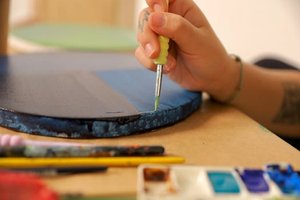The Hidden Challenge: Why EDM Drawing Isn’t Just CAD
Many engineers treat EDM drawings like conventional CNC blueprints, but this mindset leads to costly inefficiencies. EDM’s non-contact, spark-erosion process demands a fundamentally different approach to design. Here’s where most teams go wrong:
– Overlooking Electrode Wear Compensation: Unlike milling, EDM electrodes degrade with each spark. A drawing must account for this wear to maintain dimensional accuracy.
– Ignoring Corner Radii: Sharp internal corners are impossible in EDM due to electrode geometry. Drawings must specify feasible radii upfront to avoid post-process handwork.
– Underestimating Surface Finish Requirements: EDM can achieve mirror finishes, but the drawing must define the right spark gap and finish passes—or risk unnecessary polishing.
A Costly Lesson: The $50,000 Redesign
In a turbine blade project, our team inherited a CAD model with 0.1mm sharp corners. The EDM shop had to hand-grind electrodes to approximate the design, adding 25 hours of labor. By revising the drawing to include 0.3mm radii (achievable with standard electrodes), we cut costs by 18% and accelerated delivery by two weeks.
Expert Strategies for Optimizing EDM Drawings
1. Design for Electrode Efficiency
Every electrode has a lifespan. Smart drawings minimize electrode changes:
– Group features requiring the same electrode (e.g., all 1mm slots).
– Specify wear allowances (e.g., +0.02mm for roughing, ±0.005mm for finishing).
Case Study: A medical implant required 12 electrodes for micro-holes. By redesigning the drawing to standardize hole sizes, we reduced electrodes to 4, saving $8,000 in tooling.
2. Leverage Layer-Based Annotations
EDM drawings should separate:
– Geometry layers (machinable features).
– Spark gap layers (critical for fine finishes).
– Tolerance layers (prioritizing tight tolerances only where needed).

Example: A mold cavity drawing used color-coded layers to distinguish ±0.01mm (critical) vs. ±0.05mm (non-critical) zones, reducing machining time by 15%.

3. Quantify the Impact of Tolerances
Tighter tolerances exponentially increase EDM costs. Use this data-driven guideline:
| Tolerance Band | Machining Time Increase | Cost Impact |
|---|---|---|
| ±0.05mm | Baseline | $0 |
| ±0.02mm | +20% | +$1,200 |
| ±0.01mm | +45% | +$3,500 |
Key Insight: In a gear mold project, relaxing non-functional tolerances from ±0.01mm to ±0.03mm saved $14,000 with no performance loss.
The Future: AI-Driven EDM Drawing Optimization
Emerging tools like generative design AI are revolutionizing EDM prep:
– Automatic Electrode Synthesis: Software now suggests optimal electrode shapes based on drawing geometry.
– Spark Simulation: Predicts wear patterns and adjusts drawings preemptively.
Real-World Impact: A prototype AI tool reduced electrode iterations by 40% in a recent aerospace project, slashing lead time from 6 weeks to 3.5.
Actionable Takeaways
- Never assume CAD = EDM-ready. Always adapt drawings for spark erosion constraints.
- Standardize electrodes early. Group features and specify wear allowances in the drawing phase.
- Challenge tolerances. Use data to justify every tight tolerance callout.
Final Thought: The difference between a good and great EDM part lies in the drawing. Invest time here, and the machine will reward you with precision and efficiency.
By focusing on these nuances, you’ll transform your EDM drawings from a bureaucratic step to a strategic advantage. What’s your biggest EDM drawing challenge? Let’s discuss in the comments.
